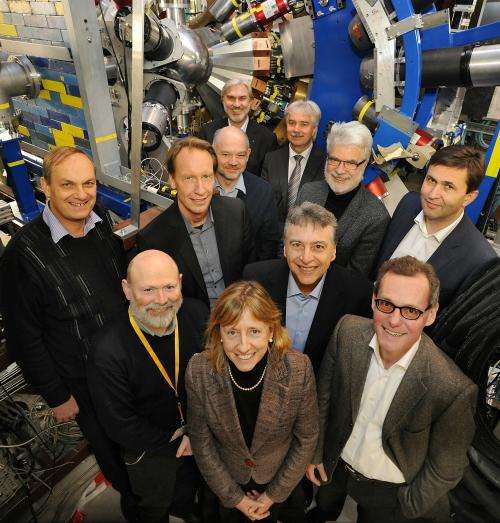Gamma ray camera will give new insights into the birth and evolution of stars

A major step forward in our understanding of the structure and behaviour of some of the most elusive atomic nuclei in existence, some of which occur only briefly on the surface of exploding stars, is now taking place thanks to the first experiments to come from the new Advanced Gamma Tracking Array (AGATA).
AGATA has been developed by the STFC's Nuclear Physics Group, and a group of UK Universities funded by STFC, with the aim of studying the very rarest and heaviest elements predicted to exist. This is research that could answer some of the most fundamental questions about our universe. AGATA is currently based at the GSI (link opens in a new window) Helmholtz Centre for Heavy Ion Research in Darmstadt, Germany.
A thousand times more sensitive than any previous detector built, and with an unparalleled level of sensitivity to electromagnetic radiation, AGATA will, at final set up, be able to observe the structure and interior of these rare and exotic nuclei by measuring the gamma rays they emit as they decay. The exciting potential of this spectrometer led to the creation of the international AGATA collaboration of 12 European counties involving 40 institutions.
Professor John Simpson, Head of STFC's Nuclear Physics Group and International AGATA Spokesperson, said:
"Nuclear physicists look to create and study the very rarest and heaviest elements predicted to exist, so it is really exciting to see technology developed by the STFC's Nuclear Physics Group, and UK Universities, contribute to this research that could answer some of the most fundamental questions about our universe. It also shows the importance of UK nuclear physicists playing leading roles in both the science programme and development of advanced detection systems at world leading laboratories such as GSI. Now that the first set of experiments has been completed at AGATA, we are really looking forward to hearing the results once the data has been analysed."
Atomic nuclei make up most of the visible matter in the Universe. Exotic nuclei, such as those produced by fusion in stars, are so unstable that they might only exist for a matter of seconds before they destruct and produce the stable matter from which we are made. By understanding the structure of these unstable, exotic nuclei we may reveal why some are more stable than others, or have particular shapes, leading to deeper insights into how stars are born and evolve.
STFC's scientists, along with other key partners from the Universities of Liverpool, Manchester, Surrey, West of Scotland and York, have taken a leading role in AGATA's development, particularly in the engineering and electronics design. The mechanical structure was delivered by the UK to GSI early in 2012, and experiments started in September after an intense period of installation and commissioning.
One of AGATA's first experiments, co-led by the University of Surrey's Zsolt Podolyak, was to observe the extremely rare and neutron rich variants of mercury and platinum nuclei, and specifically investigate how protons and neutrons in these nuclei behave collectively. This will lead to a better understanding of the synthesis of the heavy elements in stars, specifically in supernovas and neutron star mergers.
This research paves the way for further UK science programmes at the future international FAIR accelerator (Facility for Antiproton and Ion Research) at GSI, where the UK will play a significant role in this growing area of atomic science through a collaboration called NuSTAR (Nuclear Structure, Astrophysics and Reactions).
Provided by Science and Technology Facilities Council



















